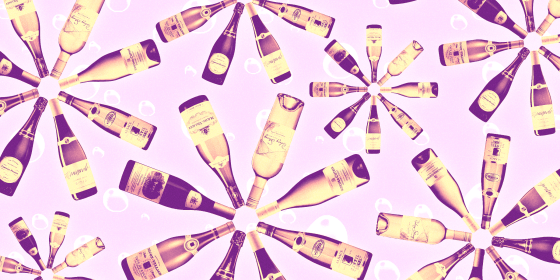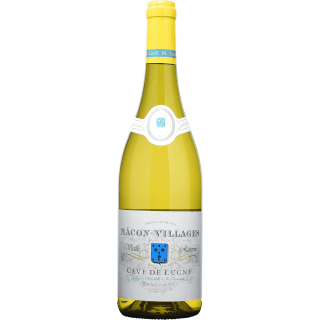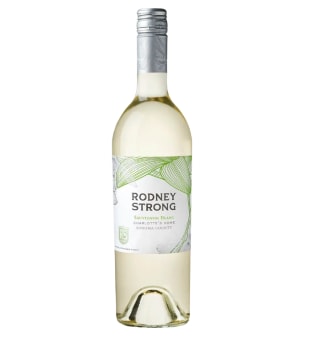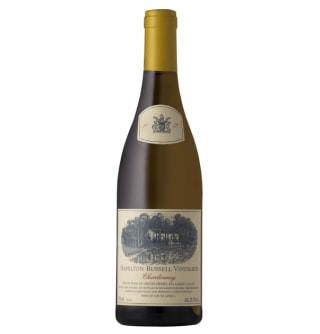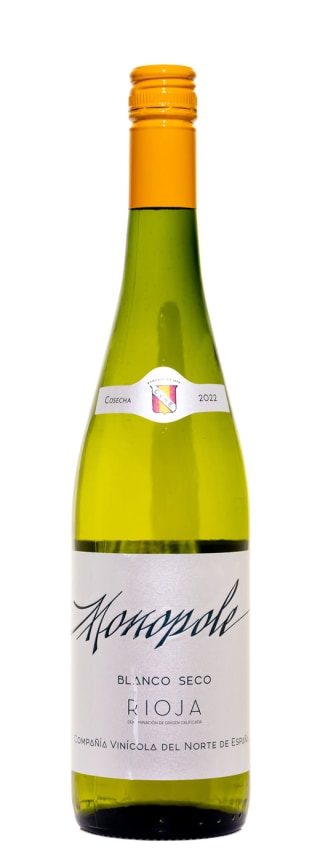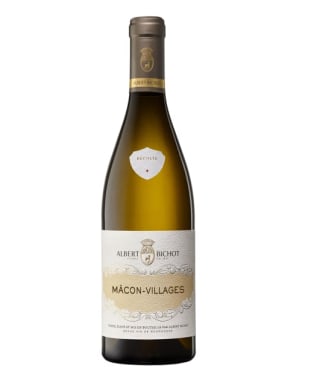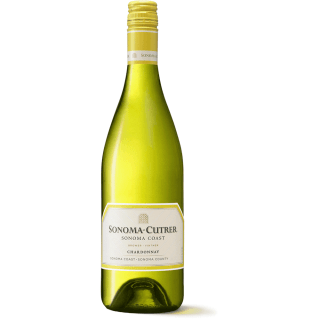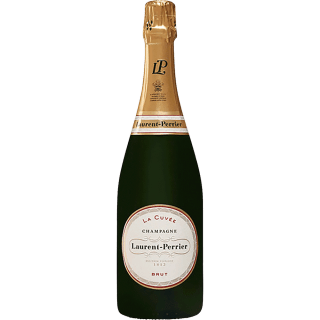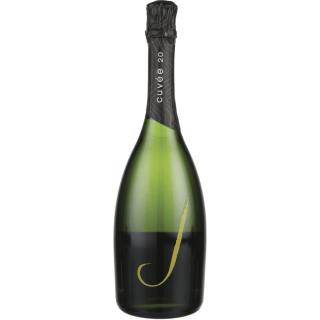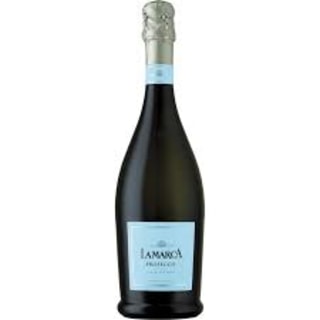Wine shouldn’t give you something to whine about. After all, we sip on the libation to (hopefully) destress and detach ourselves from the chaotic world around us, right?
But not all wine is created equally, especially many of the white varietals meant to be chilled and sipped outside and to complement summer bites like seafood, stone fruit and grilled chicken.
Any jaunt down the wine aisle at a typical grocery store — one that’s legally allowed to sell alcohol — can be intimidating for an everyday consumer. Aside from the overwhelming volume of options, most Americans lack a basic understanding of wine and may opt for an eye-catching label or a grape they’ve enjoyed in the past. Some shoppers are simply led to believe that a higher price means higher value, which isn’t always the case.
“The most expensive is not always the best option,” Angelo Di Costanzo, director of food and beverage at Lake Como’s Grand Hotel Victoria, tells me in an email for TODAY.com.
So instead of rushing straight for the priciest bottle on the shelf, Di Costanzo recommends looking “for something around the $15 — $35 range for a fantastic taste and body that pairs well with most dishes.”
Of course, this is much easier for a professional than it is for us average shoppers, so I tasked eight sommeliers from around the country with suggesting their favorite mainstream, readily-available bottles. Most of their recommendations can be found for less than $25.
As a note from me, I always implore folks to hop into their local wine shop and have the owner or on-site sommelier assist with finding the perfect bottle — ideally one that supports smaller winemakers doing great things. The following is a list of great alternatives for the shopper who may not have the time, interest or patience for more intentional vino education.
Best overall: Cave de Lugny, Mâcon Village Reserve Chardonnay
Chardonnay does not have to be the ultra-buttery, oak-heavy monstrosity produced by many affordable wine brands. Instead, it can make for a versatile drink that pairs with practically any warm-weather dish, side or dessert during a summer soiree, barbecue and any event that demands alfresco dining.
“Chardonnay that has not been overly manipulated in the winery highlights all of the exotic, tropical and lemony notes in a wine,” Liz Martinez, beverage director of The Apparatus Room at the Detroit Foundation Hotel, explains via email.
Keeping this in mind, her pick for the best overall white is Cave de Lugny, Mâcon Villages Reserve Chardonnay.
“The winery is a historic cooperative dedicated to preserving the traditions of the (Burgundy) area and they really care about Chardonnay, delivering a great product that is also a great value,” says Martinez.
“This wine delivers on a lot of levels. It is super zippy and fresh, with lemon, mineral and white flower notes to balance the body and texture of the wine,” she adds, revealing she can sip this bottle daily, especially at its under $20 price point.
Best for everyday drinking:Rodney Strong, Charlotte’s Home Sauvignon Blanc
Another simple sipper can be found in Rodney Strong’s Charlotte’s Home Sauvignon Blanc. Independent consultant and sommelier Wanda Cole-Nicholson raves about its ability to be consumed with all too great of ease.
“This wine is summertime in a bottle with gorgeous aromatics and tasting notes of yuzu, California citrus, lemongrass and white peach,” she explains in an email. “A hint of oak aging gives it a round, soft nature, making it unique and elegant.”
Cole-Nicholson says this wine has a quaffable character that “keeps you coming back for more.”
Best splurge: Hamilton Russell Vineyards Chardonnay 2022
If you’re celebrating a birthday, anniversary or special occasion and you’re searching for a bottle with a heftier but justified price tag, look no further than Hamilton Russell Vineyards Chardonnay.
“This wine delivers on every level — deliciousness, memorability, and a taste experience unlike any in your regular rotation,” Beki Miller, beverage manager at Wolfgang Puck’s Caramá in Las Vegas, tells me via email. “Hailing from the Hemel-en-Aarde Valley in South Africa, which translates poetically to ‘Heaven and Earth,’ this Chardonnay benefits from the vineyard’s proximity to the cool maritime breezes. The certified sustainable and organic practices ensure a bright, fresh expression of Chardonnay while still offering luxurious creaminess.”
Miller says flavors include pear, citrus and “an underlying minerality that speaks to the vineyard’s unique terroir.”
“The texture is elegant yet intense,” she adds, “with beautiful weight and complexity.”
Best budget: CVNE Monopole Rioja
Those hoping to exercise a bit of restraint on their wine spending will find solace in this rioja from Compañía Vinícola del Norte de España (CVNE), which sells for just under $13.
“This is one of my all-time favorite summer values!” raves Erin Scala, sommelier and owner of Market Street Wine in Charlottesville, Virginia. “It’s made from the Viura grape, so you’ll taste some rich fruits like peaches and pineapple, cut through with a nervy acidity that will have you reaching for a snack board dripping with cheese, crudité, and tinned fish.”
“I’m taking a case to the beach,” she adds, noting that is an ideal accompaniment to any sunny activity.
Best with seafood: Gentil "Hugel" Alsace
When it comes to perfect pairings for fish, clams, mussels, crab and the like, white wine is often the first thing that comes to mind. Los Angeles-based Ian Lokey, beverage director for Sushi Note Restaurants, touts this “Alsatian treat” he calls “one of the most versatile wines to go with all sorts of seafood.”
“Its ancient style effortlessly matches with a variety of seafood options, from oysters to sushi to cooked fish dishes,” he tells me.
According to its makers, this wine combines the qualities of all of their white varietals, and Lokey says they each play an important part in the flavor profile. “Gewürztraminer gives a bit of spice and lychee, the riesling gives an elegant counterbalance to the rich characteristics of the pinot gris while the pinot blanc and sylvaner add a refreshing twist that allows this gem to play well with all the dishes on the table.”
Best imported: Albert Bichot Mâcon-Villages
While we often turn to local regions for our white wine fix, there are plenty of bottles from overseas worthy of a spot in your weekly rotation.
“This wine consistently over-performs with mellow yellow apple, white peach, green pear, and bracing minerality, finished with a breath of vanilla blossom,” Alisha Blackwell-Calvert, beverage director of Madrina in St. Louis, explains to me in an email. “Mâcon-Villages is versatile with summer fare, pairing perfectly with fish and chips, grilled pork, baked poultry, and other medium-bodied dishes.”
Best domestic: Sonoma-Cutrer, Chardonnay Sonoma Coast
When it comes to Chardonnay, Sonoma County reigns supreme. So it comes as no surprise that Sonoma County-based sommelier and wine education consultant Rachel Thralls picked a bottle that hails from the area.
“When it comes to choosing a domestic wine, Sonoma Cutrer Sonoma Coast Chardonnay is always a good grab-and-go wine,” she says. “This is an elegantly structured chardonnay that offers a lot of finesse and a focused balance from start to finish. The blend contains fruit from four of the winery’s estate vineyards and a small group of carefully selected growers, including Dutton Ranch — a well-known and highly regarded grower family in Sonoma County.”
Thralls tells us the wine pairs well with a variety of foods, making it a great fit for roasted chicken, shrimp salad and summer vegetable risotto.
Best Champagne: Laurent Perrier, La Cuvée Champagne Brut
Catherine Morel, beverage director of Los Angeles-based 71Above Restaurant and SkyLounge, separates the sparkling category into three distinct subsections: Champagne, traditional, and non-traditional. Her pick for the former is Laurent Perrier, and she describes it as a “beautiful Champagne that is surprisingly affordable but could easily hold its own among far more expensive bottles.”
“Bright citrus and exotic fruits are balanced with rich brioche and honey,” she tells me via email of the bubbly. “This is my go-to champagne for everything from a cocktail hour glass to holding its own through an entire dinner.”
Best traditional method sparkling: J Vineyards, Cuvée 20 Brut
Some sparkling wines that fall into Morel’s “traditional” category are made using the same processes as Champagne, they just don’t come from the Champagne region. This difference is birthplace doesn’t mean they’re any less delicious, and this snappy brut from J Vineyards & Winery is proof.
“Elegant yet full-bodied with baked apple, brown butter and spice notes, this is a perfect sparkling for every occasion,” Morel says, adding that it’s light enough to enjoy by itself while being rich enough to sip on throughout a meal.
Best non-traditional method sparkling: La Marca Prosecco
“Champagne is not always the answer,” Morel argues. “When making mimosas or Aperol Spritzes, I prefer to use a prosecco instead of Champagne or traditional method sparkling."
She says the brighter and more fruit-forward style of prosecco complements the fruity notes in the two mixers. La Marca’s prosecco, Morel adds, has notes of “bright lemon, orange peel and ripe peach.”
“Plus,” she says, “a glass of prosecco is always great for an aperitif!”
